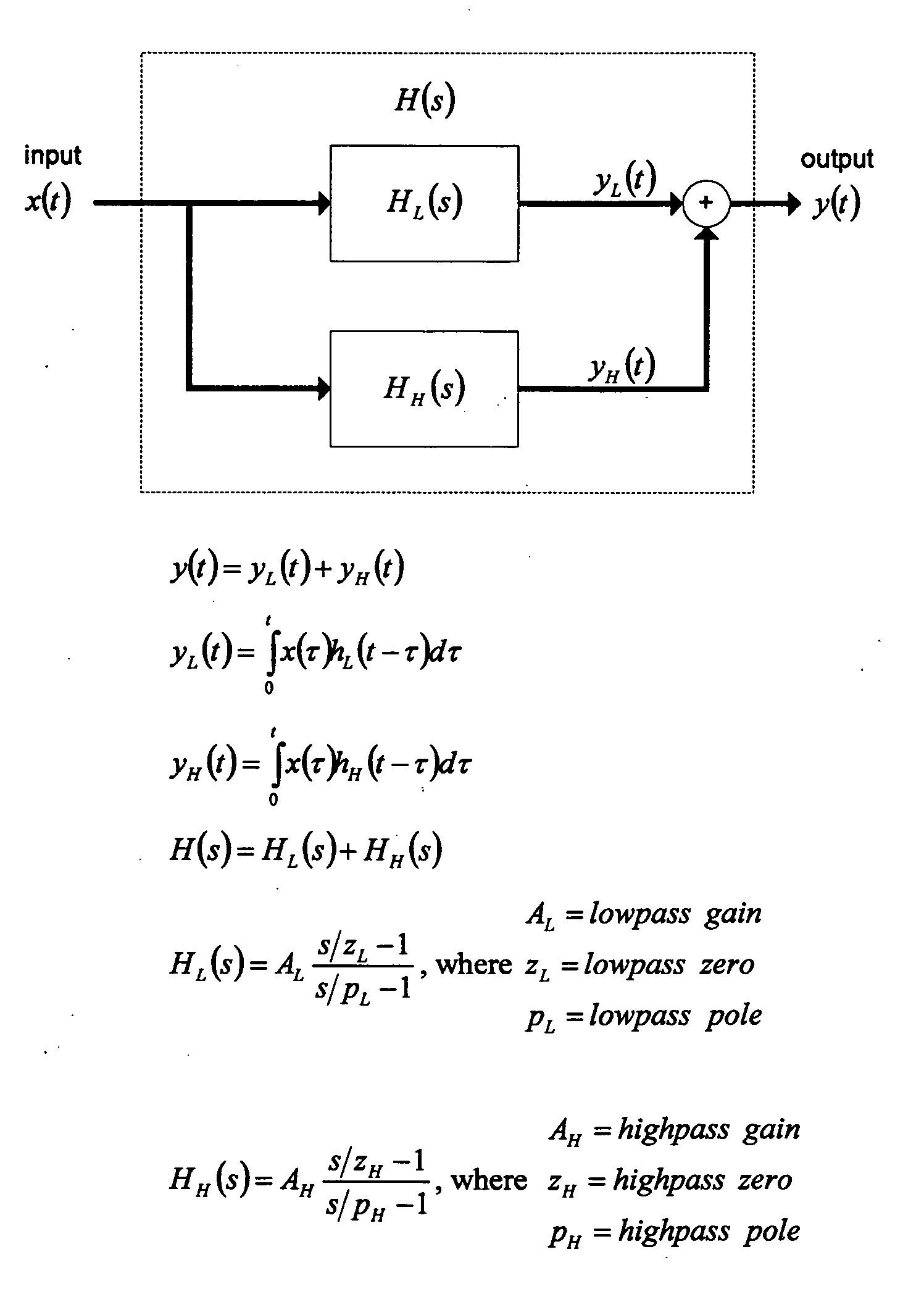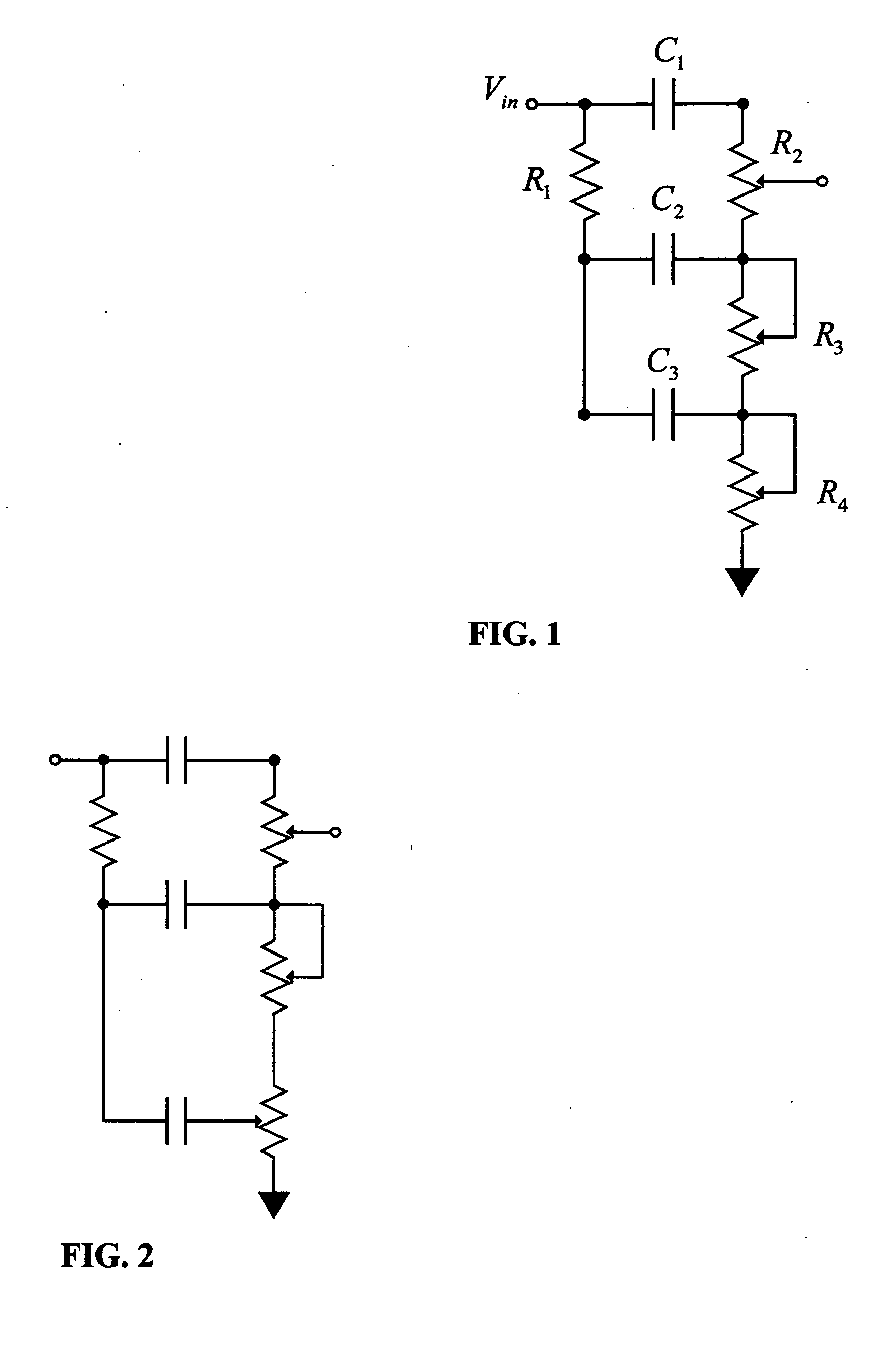Programmable tone control filters for electric guitar
- Summary
- Abstract
- Description
- Claims
- Application Information
AI Technical Summary
Benefits of technology
Problems solved by technology
Method used
Image
Examples
Embodiment Construction
[0044]FIG. 1 is a schematic of a tone control circuit that has been in use in the prior art for many years. The original form and a number of variations are illustrated in FIG. 2, FIG. 3, and FIG. 4. FIG. 1 , the original, and the variations such as the ones shown in FIG. 2, FIG. 3, and FIG. 4., including various combinations of component values, have made up the bulk of the prior art analog tone control circuits in use in guitar amplifiers, and the like. As discussed above, each change in component value or wiring configuration produces unique tonal characteristics because the components interact in the circuit in many ways, making simulation difficult.
[0045] The frequency response of the tone control circuit of FIG. 1, is plotted in FIG. 5 and FIG. 6. FIG. 5 plots the magnitude response, and FIG. 6 plots the phase response. These plots are generated using commercially available circuit simulation software. The magnitude response shows broad based bass and treble peaks separated b...
PUM
 Login to View More
Login to View More Abstract
Description
Claims
Application Information
 Login to View More
Login to View More - R&D
- Intellectual Property
- Life Sciences
- Materials
- Tech Scout
- Unparalleled Data Quality
- Higher Quality Content
- 60% Fewer Hallucinations
Browse by: Latest US Patents, China's latest patents, Technical Efficacy Thesaurus, Application Domain, Technology Topic, Popular Technical Reports.
© 2025 PatSnap. All rights reserved.Legal|Privacy policy|Modern Slavery Act Transparency Statement|Sitemap|About US| Contact US: help@patsnap.com



